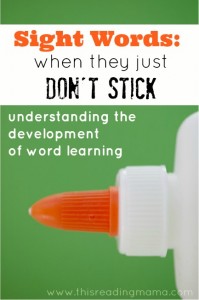Beyond a doubt, the two most common mix-ups when it comes to short vowels are short e and short i. This is especially true in the south, where words like pin and pen sound exactly the same when they are spoken.
The most common question readers ask me about short vowels is how they can help their learners distinguish the difference between these two sounds.
*Be sure to grab the free short vowel cards at the END of this post! Click on the teal download button.
Tips for Teaching Short e and Short i
Let’s jump in and explore some tips for teaching short e and short i today. Hopefully, you can find something that will resonate with you and your learners.
1. Teach short e and short i separately.
Just like teaching b and d at the same time might confuse youngsters learning the alphabet, it’s also good to separate confusing short vowel sounds.
It’s okay to let several weeks go by between teaching short i and short e. Honestly, I like to keep short a away from short e as well because those can also get confused sometimes.
2. Encourage learners to look in the mirror when making the short vowel sounds.
When my second son had a mild s-lisp, I remember part of his diction exercises were done while he looked in the mirror. He had to watch his teeth close together to make the /s/. The moment he saw what his mouth was supposed to look like, the light bulb came on.
Most consonant sounds are easily “felt” in the mouth based on what your teeth or lips do to help make the sound. This is not so with most vowels. Because vowels are formed mostly with small changes in tongue position, it can be nearly impossible for learners to “feel” them in the mouth.
One solution? Look in the mirror. This can help learners see and better “feel” how short e is different than short i. {Hint: With short e, learners should drop their jaw a little more than short i.}
3. Provide picture cues.
Our phonics wall cards are super helpful for helping learners remember their phonics sounds. Last year, my Kindergartner and I went over the short vowel sounds using our short vowel cards nearly every single day.
If you use or create your own set of picture cue cards, I would caution you to be sure your pictures really do represent the short e or short i sound. For example, elephant for short e is often misleading, as most struggling learners focus in on the l at the beginning and not the short e sound. A picture of an egg is more representative of the short e sound.
I’ve created a freebie from our phonics cards with just our short e & short i cards {as seen above}. You can find the download at the END of this post.
4. Avoid using words ending in -en or -em words at first.
These two word family rimes are best to avoid at first because in many places, -in/-en and -im/-em are used interchangeably. They sound exactly the same. Start with short e words that end with -et, -eg, -ep, -ess, or -ell first. For the most part, these will give your learners a more true short e sound. {Watch out for get though!}
Of course, -en is such a common rime and it can’t be ignored too long. But if your learner is really struggling, I recommend addressing it after some of the other word families have been used.

5. Treat tricky pairs like homophones.
Be explicit about confusing word pairs. Show learners pin and pen or tin and ten. While you probably won’t find these sets in your grammar book under “homophones,” treat them as such.
Talk about the meaning of each word. Help learners understand the context under which each one should be used. For example, it’s the number ten and a tin can.
6. Don’t stop dead in your tracks.
I’ve seen some curricula suggest that learners should not move on from these confusing short vowel sounds unless they have completely mastered them. I’m not downplaying mastery with phonics. Knowing phonics IS important for reading and spelling.
But I also don’t want to suggest that you should pause learning any other phonics skills until your learner is completely down with short i and short e. You can move on to other less confusing short vowel sounds or blends and digraphs, even if short i and short e aren’t 100% mastered. Short e words and short i words should constantly be reviewed along with the other phonics skills that you learn.
7. It’s normal for spelling to lag behind reading.
Lastly, it helps to remember that it’s completely normal for learners to read words with these short vowels and still confuse the sounds when spelling words. That’s because spelling is harder than reading. Give learners support by providing the picture cues, telling them to look in the mirror as they say the word, or reminding them of their “homophones.”
You Might Also Like



Enjoy teaching!
~Becky
The post Tips for Teaching Short e and Short i appeared first on This Reading Mama.



